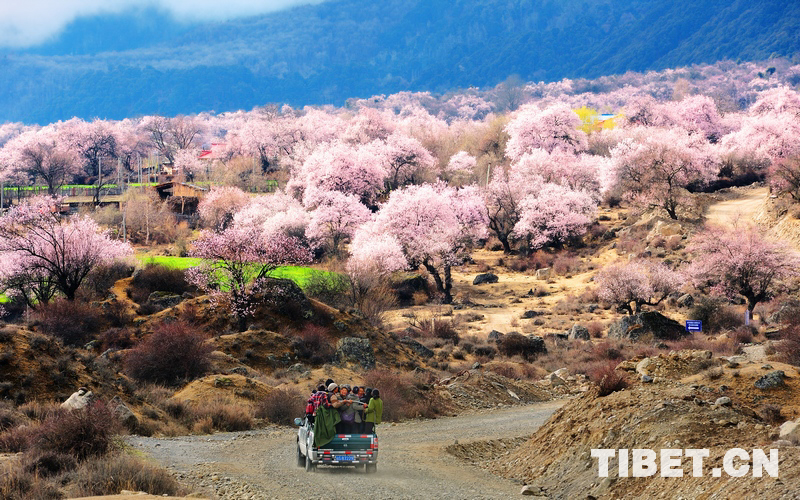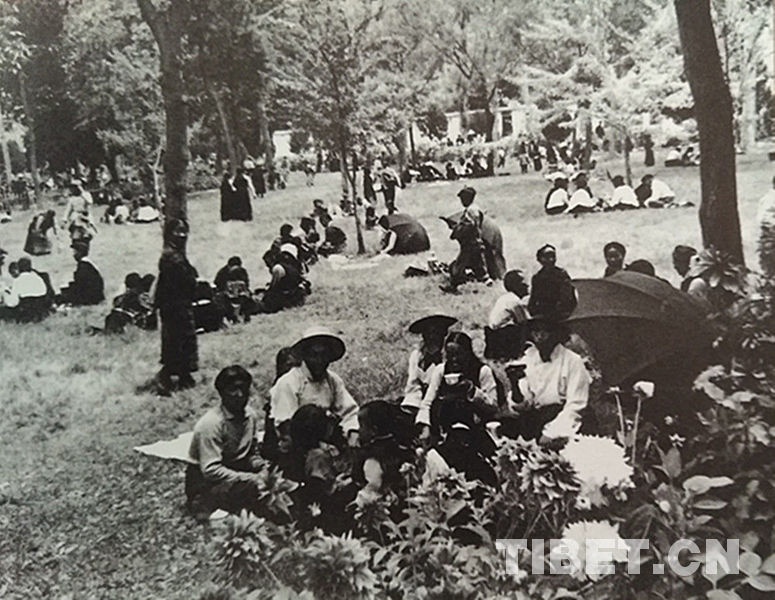Great changes in Ngari, Tibet over the last 61 years
When the sun shines on Mt. Kailash in Ngari Prefecture, southwest China's Tibet Autonomous Region, a regular day for Tseten’s family begins. 80-year-old Tseten and her family live in Gar New Village in Gunsa Township, Ngari Gar County. She takes a sip of butter tea and chats with her husband, PemaTenzin, while sitting in their sun room basking in the sun, watching their granddaughter play. This is a normal day for Tseten’s family.
This kind of life makes Tseten content and happy. Having experienced darkness in the past, she understands how hard it is to get a life like this.
In 1949, when Tseten was only 9 years old, she was sent tograze sheep for a herdsman. “I usually slept in the sheep’s pen. I remember that when I woke up in the morning, there was snow in boots, so I couldn’t put my feet in them. But I had to still take the sheep out to graze.”
Tseten remembers that in the winter when she was 11, it snowed extremely heavily. She was in charge of the sheep, but one of them ran out of the pen and was missing. The shepherd slapped her without forethought and forced her to look for the sheep in the wind and snow. Tseten had to walk knee-deep in the snow. “My hands and feet were frozen, and I almost froze to death.”
In October 1952, the Ngari Subcommittee, the first Party organization in Ngari Prefecture, was established in Gar Gunsa. Here, for the first time, Tseten tasted a full meal and experienced warmth. “We took the firewood that we picked and brought it to the canteen, and we could exchange for rice, meat, and flour. They also gave me shoes and clothes.”
After filling her stomach and getting warm clothes, Tseten felt very happy. As a young girl, she never thought that happy days would last long.
In 1959, a movement of democratic reform for the liberation of the serfs was launched on the snowy plateau. Those like Tseten who lived on “the roof of the world” ushered in a new life.
“Since then, our life has gradually improved. We eat well, wear warm clothes, and we aren’t oppressed. We live very well,” Tseten said. The elderly woman relies on crutches for her daily walk, but she can still sit at her home in the sun room, and the corners of her mouth rise with satisfaction.
Ngari Prefecture, located in the western part of the Tibet Autonomous Region, is the farthest, coldest, and harshest part of the Qinghai-Tibet Plateau. 61 yearshas passed since the democratic reform in Tibet, and a vigorously developing and prosperous, socialist new Ngari stands in the land of western Tibet.
Maintaining stability, promoting development, benefitting the people’s livelihoods, strengthening the foundations, and expanding opening up, Ngari has made remarkable achievements in various undertakings over the last 61 years. Right now, 100% of Ngari’s townships and towns are accessible by paved road, and the capacity of guaranteed power supply from the Ngari Power Grid has gradually improved. The construction of water conservation facilities has been accelerated, and livelihood businesses are developing rapidly.
In Kangle New District, a resettlement location for poverty alleviation in Ngari Prefecture, TenzinTsegar’s family lives in a new house. “When I was a kid, I lived in a tent. There was no water or electricity. The lighting depended on using animal fats and oils. Now here, there is a water grid, radio, television, and central heating all in the house. There are public squares, supermarkets, fitness facilities, and medical institutions available. Thank you very much to the Party and the nation.”
Tibet Stories

Chatting about alleviating poverty with Zongji in Tibet
When the first rays of sunlight hit the fields in the early morning, Zongji, a villager from...

